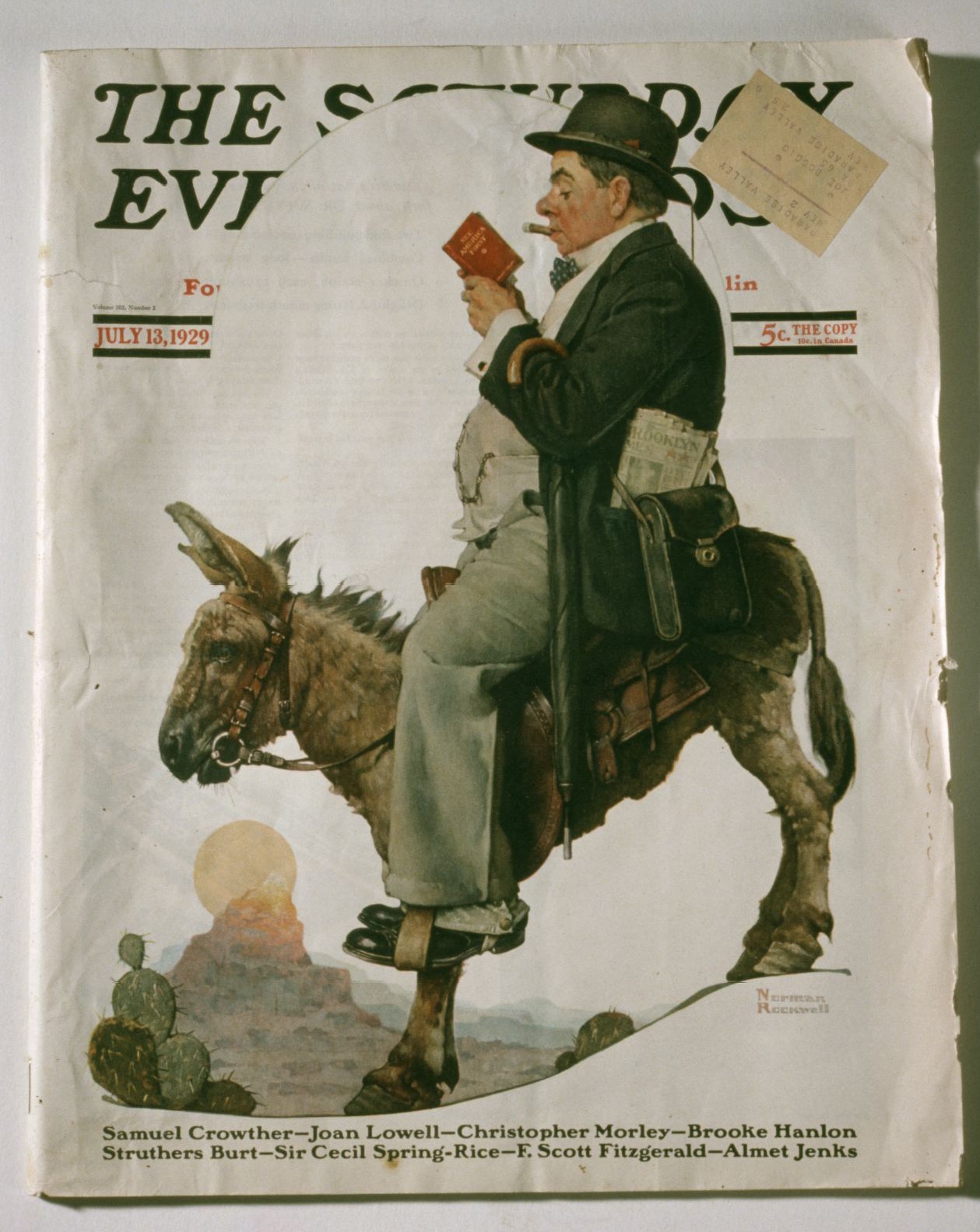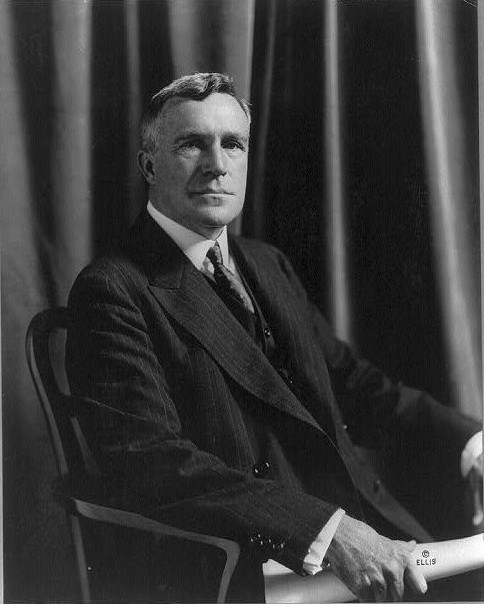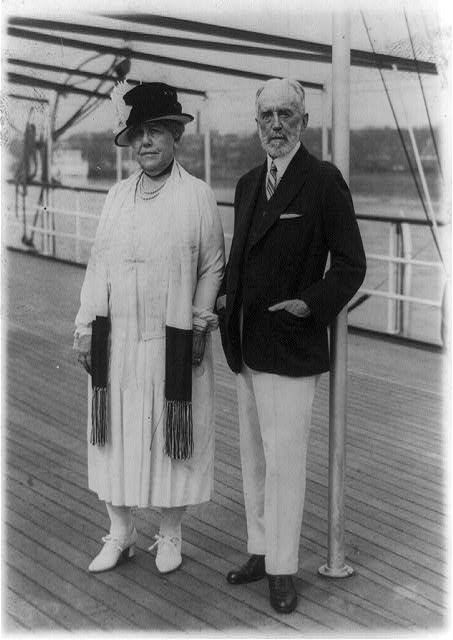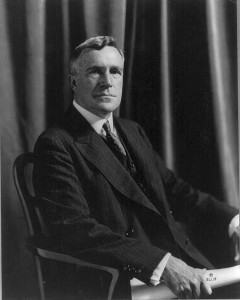Saturday Evening Post
Essay
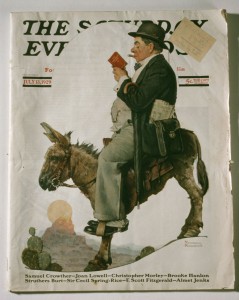
The Saturday Evening Post, one of the oldest magazines in the United States, originated in Philadelphia in 1821 as a four-page weekly newspaper printed on the same equipment as Benjamin Franklin’s Pennsylvania Gazette. After switching to a magazine format in 1870, the Post grew in the twentieth century to reach more than a million readers each week with articles, commentary, fiction, and art, including iconic covers by Norman Rockwell (1894-1978).
Over the years the Saturday Evening Post published national news, moral commentary, and human interest articles. It became best known, however, for popular and literary fiction. Jack London (1876-1916) issued his novel The Call of the Wild in serialized form in the magazine in 1903, and its pages featured a number of literary icons–including Edgar Allan Poe (1809-49), Ray Bradbury (1920-2012), William Faulkner (1897-1962), F. Scott Fitzgerald (1896-1940), Kurt Vonnegut (1922-2007), and John Steinbeck (1902-68)–as well as popular writers like Agatha Christie (1890-1976) and Louis L’Amour (1908-88). It also published the poetry of Carl Sandburg (1878-1967) and others.
The magazine also became well known for its illustrations. It featured the work of a number of the nation’s top cartoonists, most notably the Hazel series by Ted Key (1912-2008), but its cover images became even more notable. Cover artists included John Philip Falter (1910-82), Charles Chickering (1891-1970), George Hughes (1907-1989), and many others, but the most popular was Rockwell, who was discovered by Saturday Evening Post editor George Horace Lorimer (1867-1937) in 1916. Rockwell’s art, particularly his covers for the Post, remain popular for their depiction of everyday American life and their chronicle of major events in United States history, showcasing iconic images such as Rosie the Riveter in World War II or the heroic young Ruby Bridges during the civil rights movement.
The Saturday Evening Post began its rise to fame in 1897 when Cyrus H.K. Curtis (1850-1933), founder of the Curtis Publishing Company in 1891 and of The Ladies Home Journal, purchased it for one thousand dollars. Two years after Curtis bought the Post, Lorimer began editing the magazine, and he remained at the helm until 1936. During this time the magazine’s circulation increased dramatically, from two thousand to over three million copies a year, and in 1910 the company, after changing ownership, built a grand headquarters at the corner of Sixth and Walnut Streets near Independence Hall.
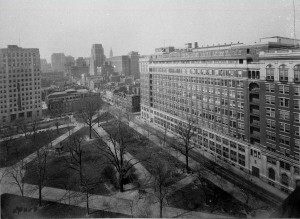
Despite its success in the early decades of the twentieth century, readership began to decline in the late 1950s. This was due in part to controversy over columnist Garet Garrett’s (1878-1954) vocal stance against Franklin D. Roosevelt’s New Deal programs, as well as to the growth of television, which began to overshadow print media for news and information. As the periodical’s popularity declined, it was less able to acquire pieces by prominent authors and illustrators, further lessening its appeal. In the late 1960s the magazine accused University of Alabama football coach Paul “Bear” Bryant (1913-83) and University of Georgia coach Wally Butts (1905-73) of conspiring to fix a game between their teams. This resulted in a defamation lawsuit and an order to pay over three million dollars to Butts.
The Saturday Evening Post ceased publication in 1969 only to be revived in 1971 after its parent company, Curtis Publishing Company, was acquired by Beurt SerVaas, an Indianapolis industrialist. SerVaas began to publish the Post quarterly from Indianapolis. In 1982 the Benjamin Franklin Literary and Medical Society, founded by Dr. Corena “Cory” SerVaas (the wife of Beurt SerVaas), acquired the Post and reoriented it to focus on health and medicine. Corena SerVaas founded the Saturday Evening Post Society and transferred to it the ownership of the magazine.
The periodical’s history took a new turn in 2013 when the SerVaas’s daughter Joan became chief executive and publisher and returned its focus to a broad range of topics and increased publishing to six times a year. The magazine returned to Philadelphia and established offices in the Public Ledger Building, next to the Curtis Building where it was based in its heyday. Redesigned as a bimonthly news magazine featuring in-depth coverage of the top issues of the day, from big banks to gun control, the Saturday Evening Post in many ways returned to its roots.
Beverly C. Tomek is the author of Pennsylvania Hall: A ‘Legal Lynching’ in the Shadow of the Liberty Bell (Oxford University Press, 2013) and Colonization and Its Discontents: Emancipation, Emigration, and Antislavery in Antebellum Pennsylvania (NYU Press, 2011). She earned a Ph.D. in history at the University of Houston and teaches at the University of Houston-Victoria. (Author information current at time of publication.)
Copyright 2015, Rutgers University
Gallery
Backgrounders
Connecting Headlines with History
Links
- Saturday Evening Post
- Norman Rockwell Archives at the Saturday Evening Post
- Curtis Publishing (Digital Art Gallery)
- Saturday Evening Post Archives
- Kara Bloomgarden-Smoke, “Magazine Success Story: The Saturday Evening Post Keeps on Going” (Observer, January 15, 2013)
- Will Higgins, “Saturday Evening Post looking for dramatic turnaround” (USA Today, January 2, 2013)
- Jeff Nilsson, “On Our 190th Birthday, a Look at Our Earliest Issues” (Saturday Evening Post)
- Joseph N. DiStefano, “Saturday Evening Post to return to Philly: Update” (Philly.com)
